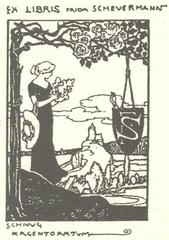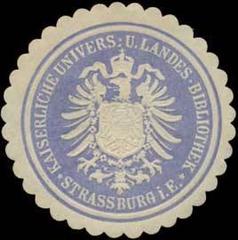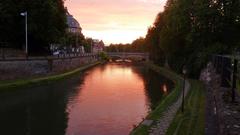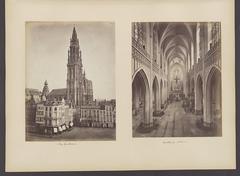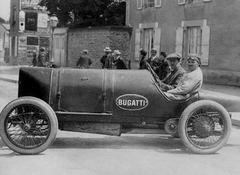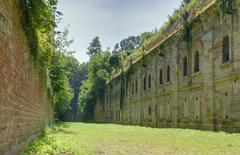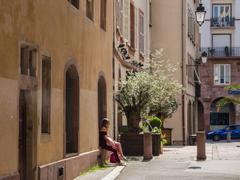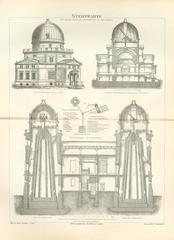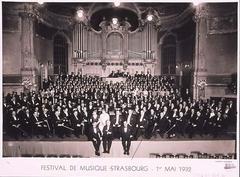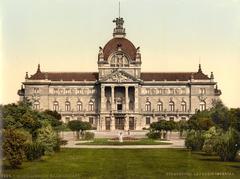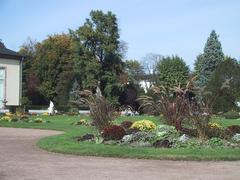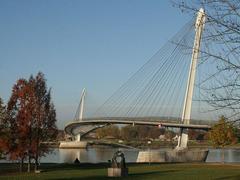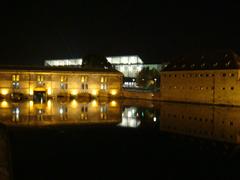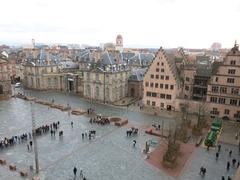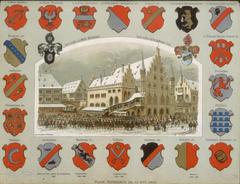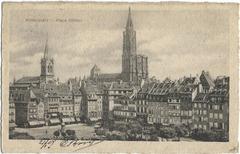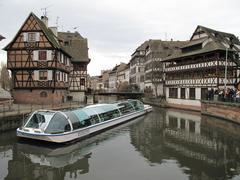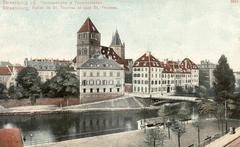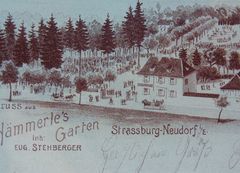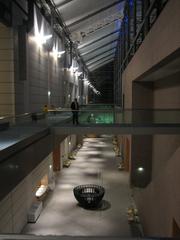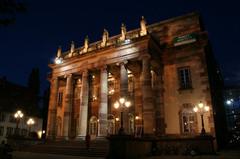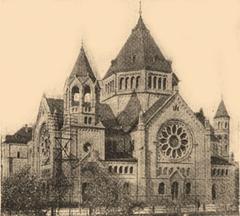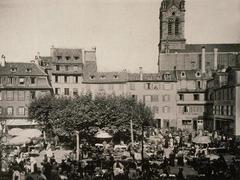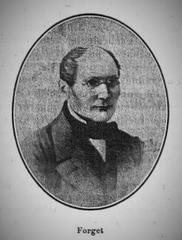
Visiting the Statue of Jean Hültz in Strasbourg, France: Complete Guide with Visiting Hours, Tickets, and Nearby Attractions
Date: 03/07/2025
Introduction
The Statue of Jean Hültz in Strasbourg, France, is a distinguished tribute to the master architect who completed the city’s iconic cathedral spire. Situated near the renowned Strasbourg Cathedral, this monument commemorates Jean Hültz (c. 1370–1449), whose innovative work crowned the cathedral with the tallest spire in the world for over two centuries. This guide provides you with a detailed exploration of the statue’s historical context, architectural significance, and essential visitor information, including location, accessibility, ticketing, and tips for making the most of your visit. Whether you are an architecture enthusiast, a history buff, or a curious traveler, the Statue of Jean Hültz is a compelling stop in the heart of Strasbourg.
For more information and planning resources, visit Visit Strasbourg and Archi-Wiki.
Table of Contents
- Introduction
- Historical Background of the Statue of Jean Hültz
- Artistic Creation and Symbolism
- Physical Characteristics
- Practical Visitor Information
- Integrating the Statue into Your Strasbourg Itinerary
- Nearby Attractions and Amenities
- Frequently Asked Questions (FAQ)
- Conclusion
- Additional Resources
- References
Historical Background of the Statue of Jean Hültz
Jean Hültz: Master Builder of Strasbourg Cathedral
Jean Hültz, originally from Cologne, was a master mason and architect who assumed leadership of Strasbourg Cathedral’s construction in 1419. His crowning achievement was the completion of the north tower and spire in 1439, which, at 142 meters, became the tallest building in the world and a defining feature of Strasbourg’s skyline (The Crazy Tourist). Hültz’s work exemplifies the High Gothic style and stands as a testament to his technical ingenuity and artistic vision.
Statue Origins and Location
Crafted by the 19th-century sculptor André Friederich in 1847, the statue was installed publicly in 1974 by the Œuvre Notre-Dame, the organization responsible for the cathedral’s maintenance (Archi-Wiki). Its location at the intersection of Quai Zorn and Rue Jean Hültz allows it to symbolically “contemplate” the cathedral spire, reinforcing the enduring bond between architect and monument.
Strasbourg’s 15th-Century Context
In Hültz’s time, Strasbourg was a thriving free imperial city, its prosperity reflected in the ambitious scale of its cathedral. The completion of the spire during the 15th century marked not only a technical triumph but also an era of cultural and economic significance for the city.
Artistic Creation and Symbolism
Sculptor and Materials
The statue was sculpted by André Friederich out of pink Vosges sandstone, harmonizing with the cathedral’s façade (Archi-Wiki). The meticulous carving reflects Friederich’s attention to historical accuracy and artistic detail.
Symbolism and Representation
Jean Hültz is depicted standing, holding a model of the cathedral’s spire and pointing toward it with his index finger—a gesture highlighting his authorship and visionary role (Archi-Wiki). The statue’s architectural motifs, including detailed renderings of plans and the spire itself, reinforce his legacy as a master builder.
Inscription and Cultural Significance
An inscription at the base commemorates the years of dedication required to complete the cathedral’s spire, situating Hültz firmly within Strasbourg’s historical narrative. The statue embodies the spirit of Gothic craftsmanship, mentorship, and the enduring pride of Strasbourg’s heritage.
Physical Characteristics
- Height: Approximately 3 meters (9.8 feet)
- Weight: Roughly 2.5 metric tons
- Material: Pink Vosges sandstone
- Details: Expressive facial features, period-appropriate attire, and a model spire held in hand (Archi-Wiki)
- Conservation: Maintained by the Œuvre Notre-Dame and city authorities, the statue is regularly cleaned and preserved to retain its vivid color and intricate details.
Practical Visitor Information
Location and Accessibility
The statue stands near Strasbourg Cathedral, at the corner of Quai Zorn and Rue Jean Hültz, within the UNESCO-listed Grande Île. The area is pedestrian-friendly and easily accessible by tram, bus, bicycle, or on foot from the city center (Visit Strasbourg).
Visiting Hours and Admission
- Hours: Open 24/7, year-round (outdoors in a public plaza)
- Admission: Free; no tickets required
- Best Times to Visit: Early morning or late afternoon for optimal lighting and fewer crowds; spring, summer, and Christmas season for special events
Accessibility
- The plaza and surrounding streets are generally accessible to visitors with reduced mobility, featuring smooth pavements and ramps where needed.
- Information panels may be available in multiple languages.
Guided Tours
- While the statue does not have its own dedicated tours, many walking and bike tours of Strasbourg’s historic center include it as a point of interest. Check with the Strasbourg Tourist Office or local providers for options (Voyage Tips).
Photography and Amenities
- The statue’s pink sandstone glows in sunlight, making it particularly photogenic.
- Cafés, shops, public restrooms, and Wi-Fi are available nearby, especially in Place Kléber and around the cathedral.
Integrating the Statue into Your Strasbourg Itinerary
Suggested One-Day Walking Tour
- Strasbourg Cathedral – Explore the interior and climb the tower for panoramic views.
- Statue of Jean Hültz – Reflect on the connection between architect and cathedral.
- Palais des Rohan – Visit the museums of archaeology, fine arts, and decorative arts.
- Petite France – Stroll through the picturesque half-timbered district.
- Place Kléber – Enjoy the city’s main square, events, and shopping (Saca Voyage).
Multi-Day or Thematic Tours
- Combine your visit to the statue with museums, a boat tour on the Ill river, or guided walks focusing on art, history, or Alsatian cuisine (Road Affair, Voyage Tips).
Nearby Attractions and Amenities
- Strasbourg Cathedral: Gothic architecture, astronomical clock, tower climb.
- Palais des Rohan: Multiple museums.
- Petite France: Canals, half-timbered houses.
- Place Kléber: Central square with major events.
- Covered Bridges & Vauban Dam: Historic fortifications and panoramic views.
Frequently Asked Questions (FAQ)
Q: Is there an entrance fee to visit the Statue of Jean Hültz?
A: No, the statue is free to visit and open to the public at all times.
Q: What are the best hours to visit?
A: Daylight hours are ideal for viewing and photography; mornings and late afternoons offer softer light and fewer crowds.
Q: Is the statue accessible for visitors with disabilities?
A: Yes, the plaza and surrounding streets are generally accessible.
Q: Are there guided tours that include the statue?
A: Yes, many historic walking and bike tours feature the statue as a highlight.
Q: What other attractions should I visit nearby?
A: Strasbourg Cathedral, Petite France, Place Kléber, Palais des Rohan, and the museums of the Grande Île.
Conclusion
The Statue of Jean Hültz is not only a work of public art but also a testament to Strasbourg’s architectural and cultural legacy. Its prominent setting near the cathedral invites visitors to pause and reflect on the achievements of the medieval master mason who reshaped the city’s skyline. Easily accessible, free to visit, and surrounded by some of Strasbourg’s most celebrated sites, the statue is a must for anyone seeking to connect with the city’s rich history.
For more up-to-date information, maps, and event calendars, consult the official Strasbourg tourism website, and consider downloading the Audiala app for audio guides and travel tips.
Additional Resources
- Official Strasbourg Tourism Website
- Archi-Wiki: Statue de Jean Hultz
- Voyage Tips: Things to Do in Strasbourg
- Road Affair: 1 Day in Strasbourg Itinerary
References
- The Crazy Tourist – 15 Best Things to Do in Strasbourg
- Archi-Wiki – Statue de Jean Hultz (Strasbourg)
- Visit Strasbourg – Cathedral of Notre-Dame
- Voyage Tips – Things to Do in Strasbourg

